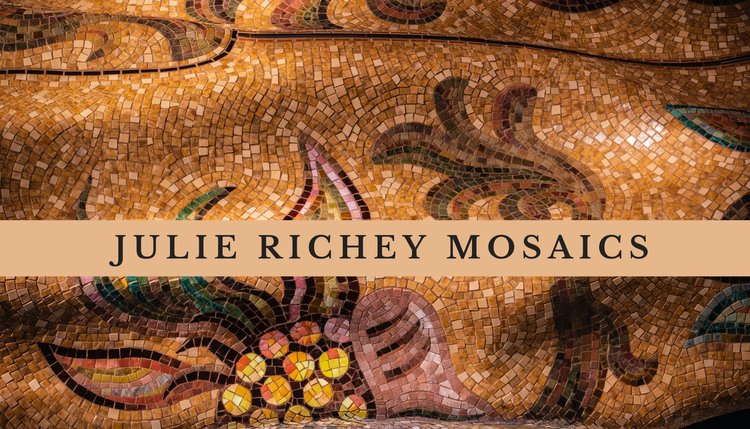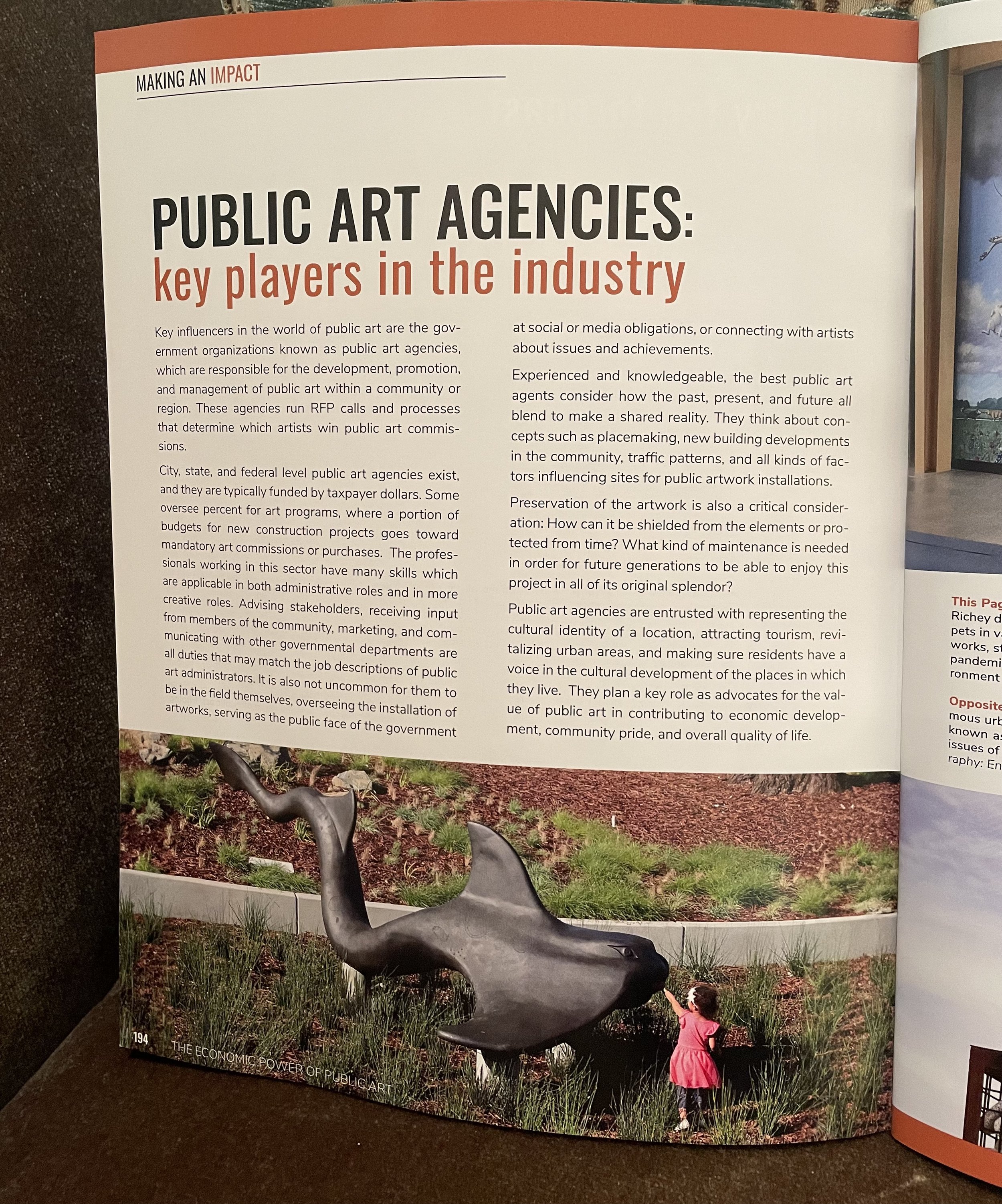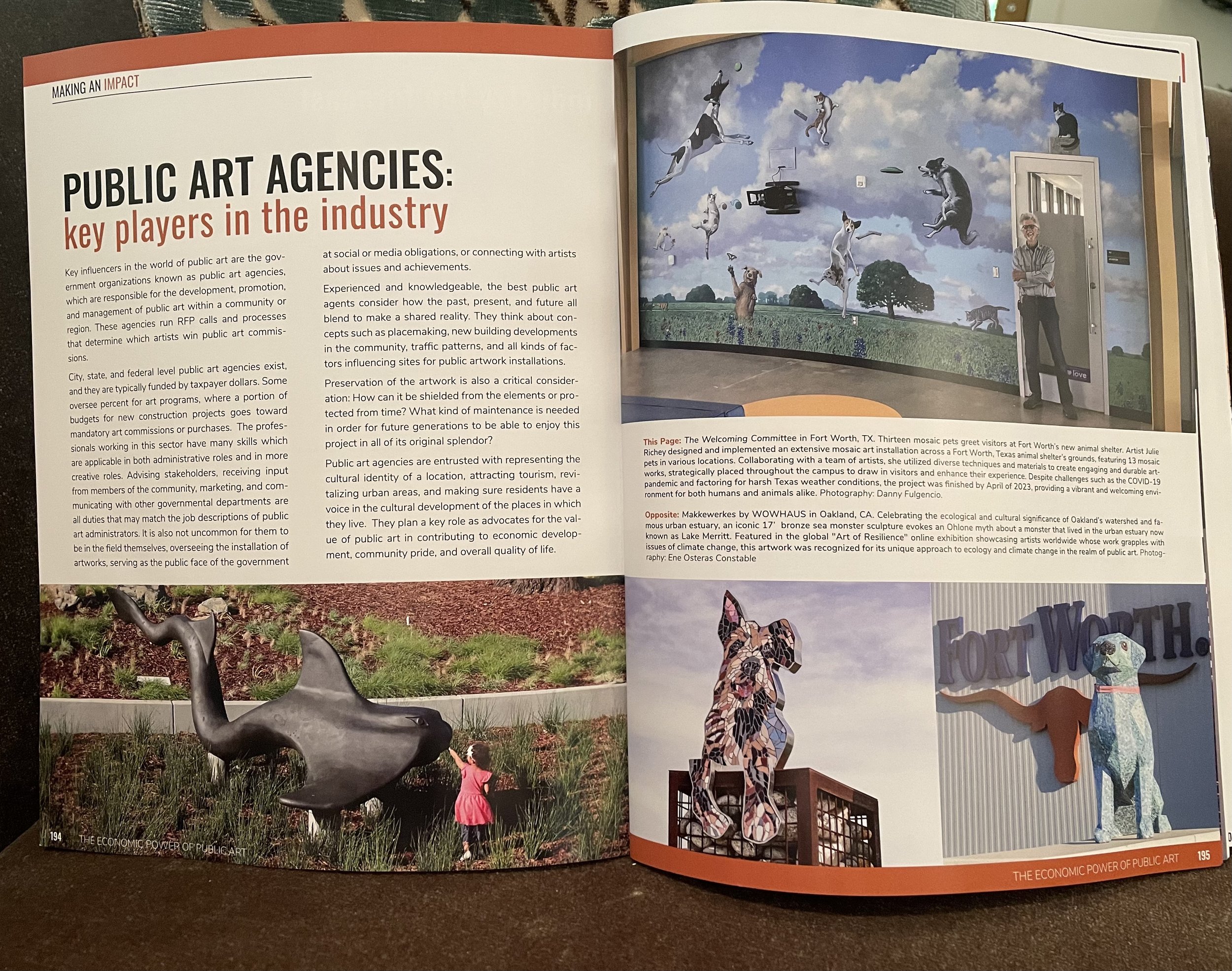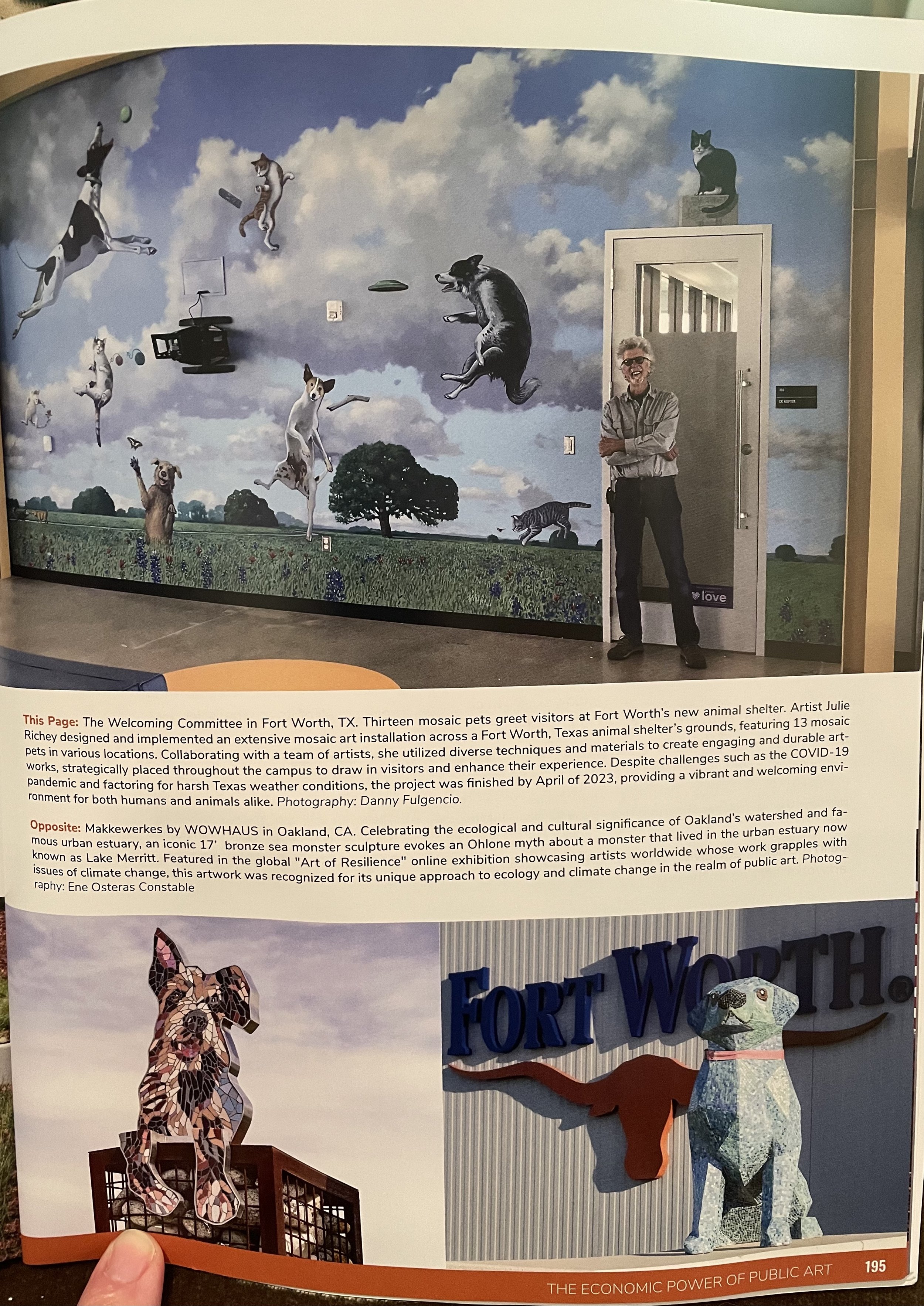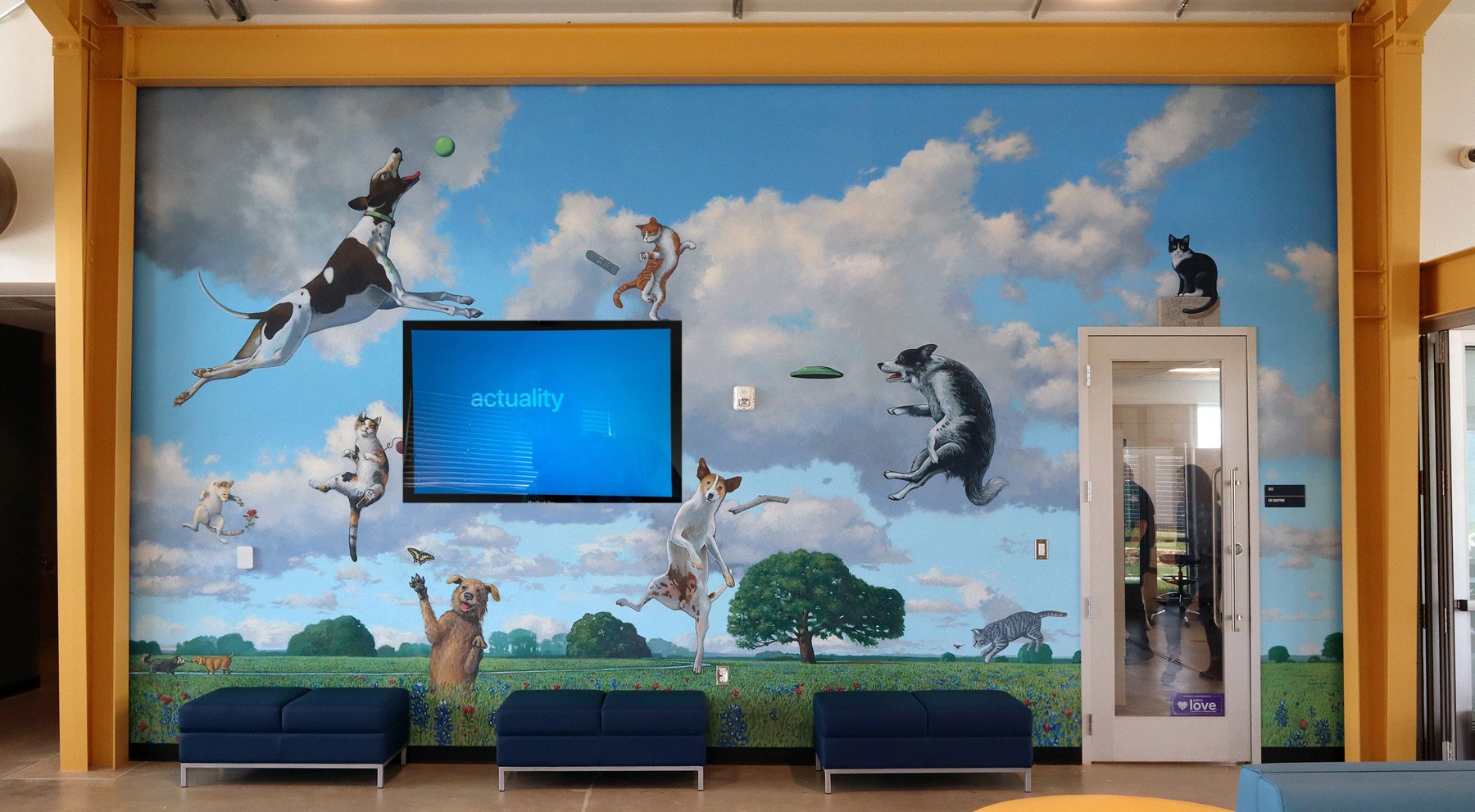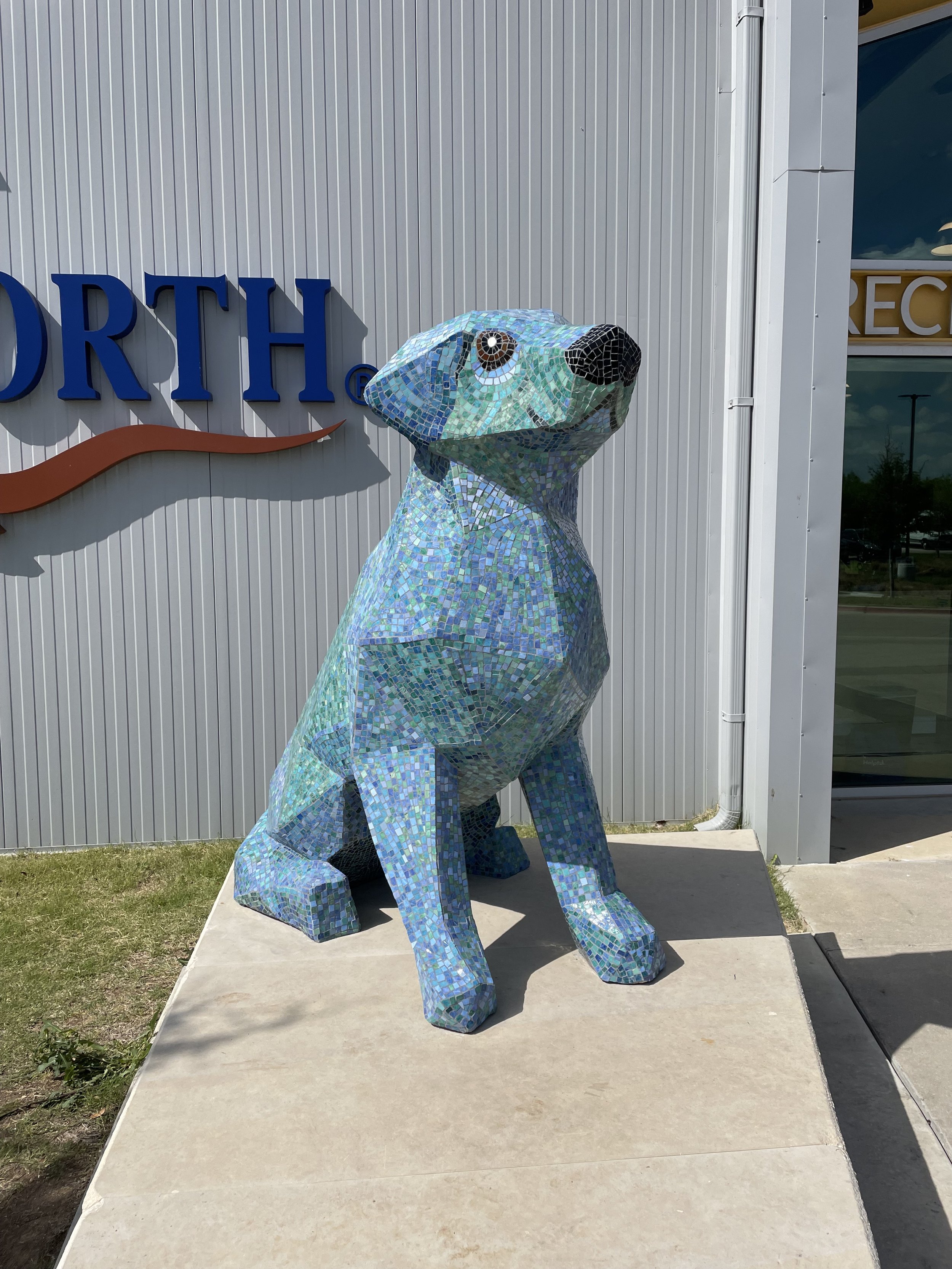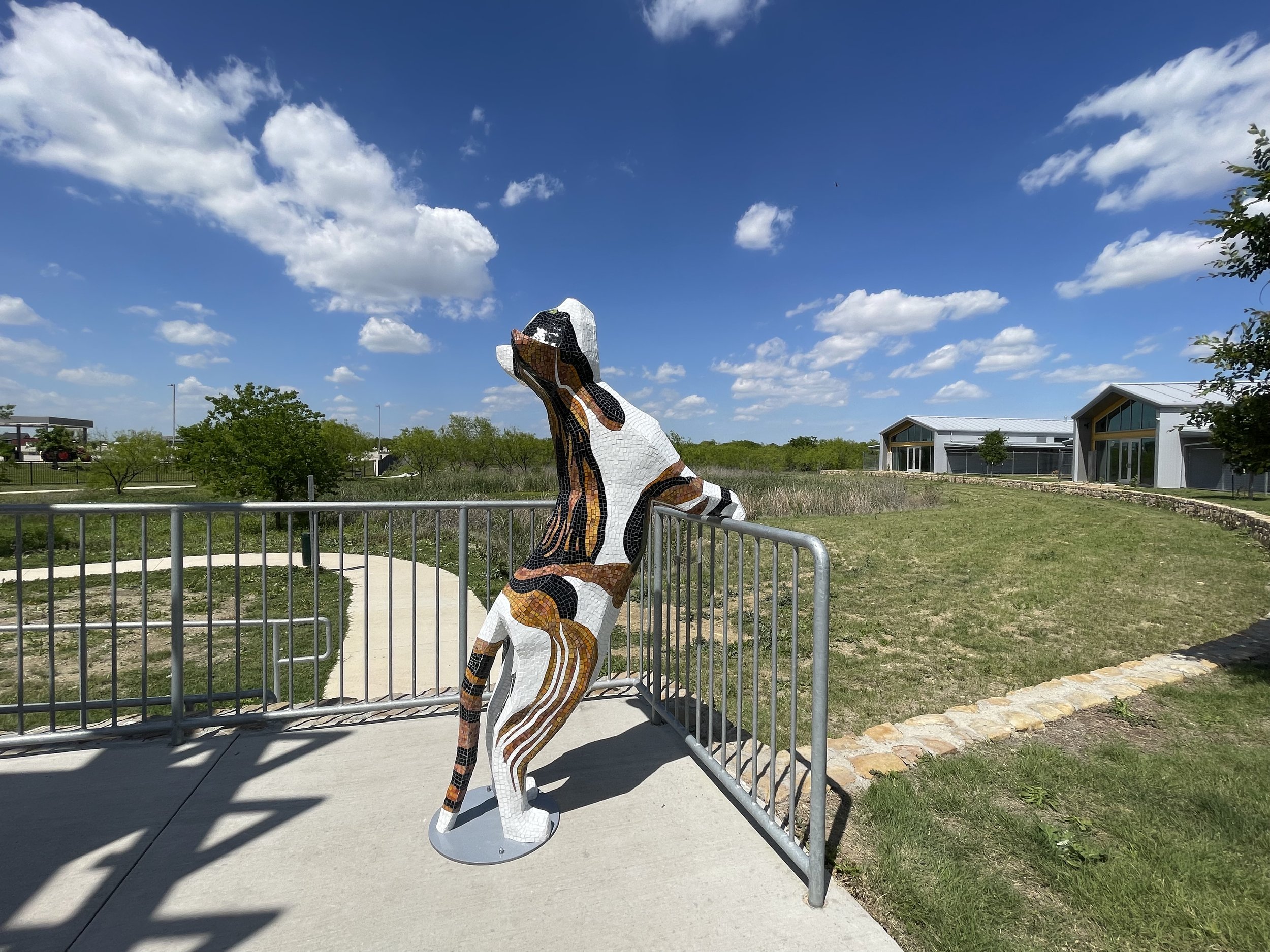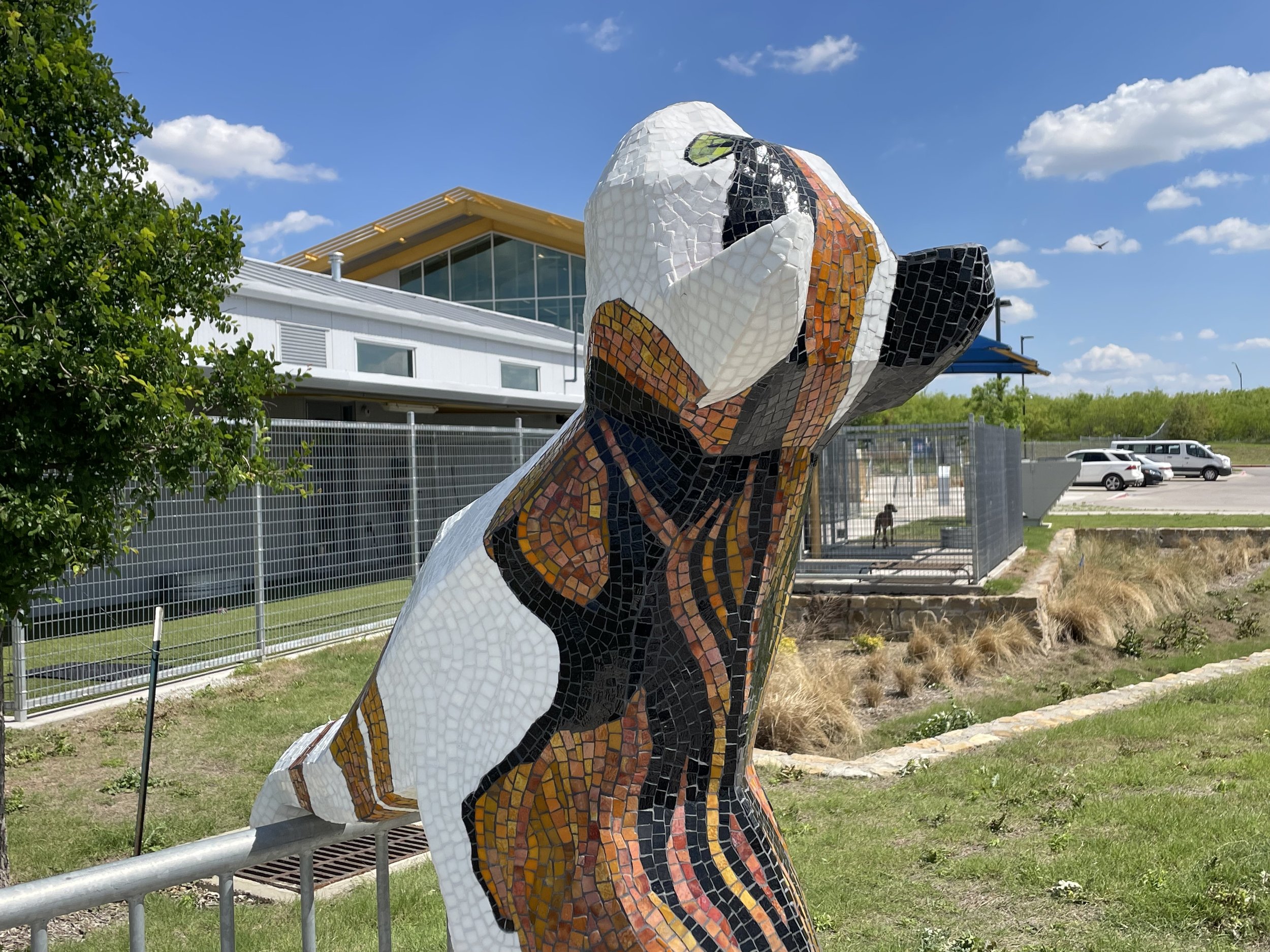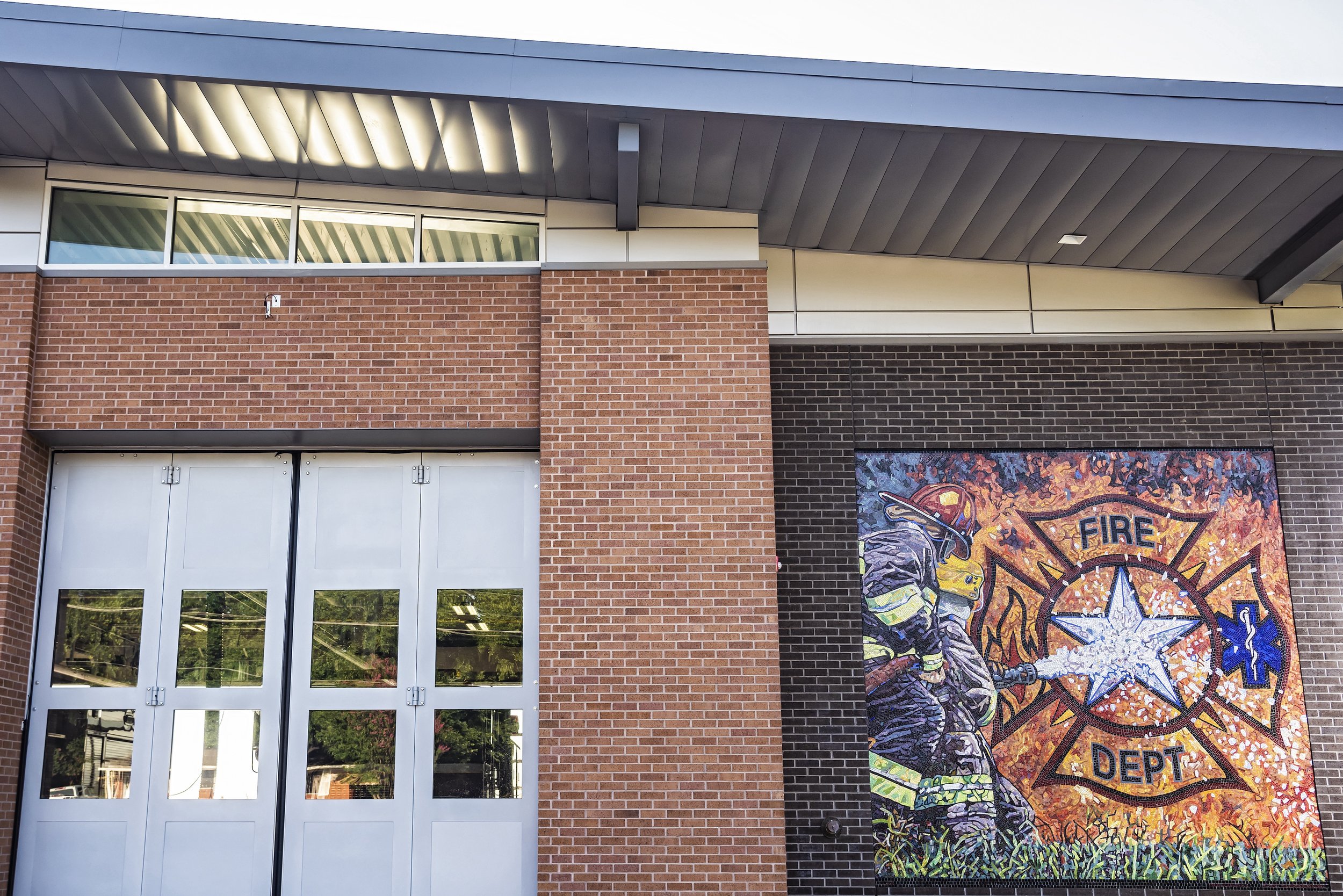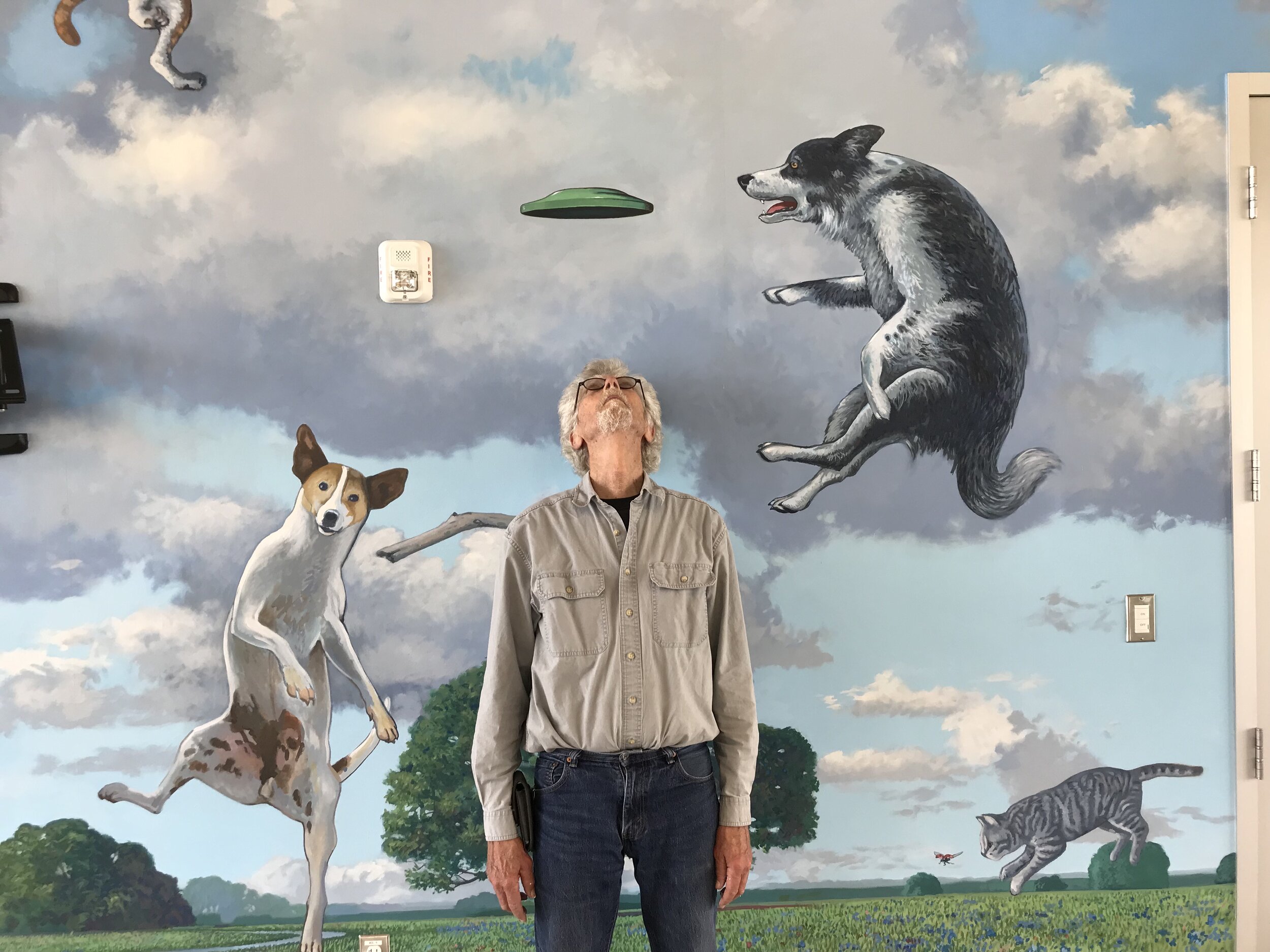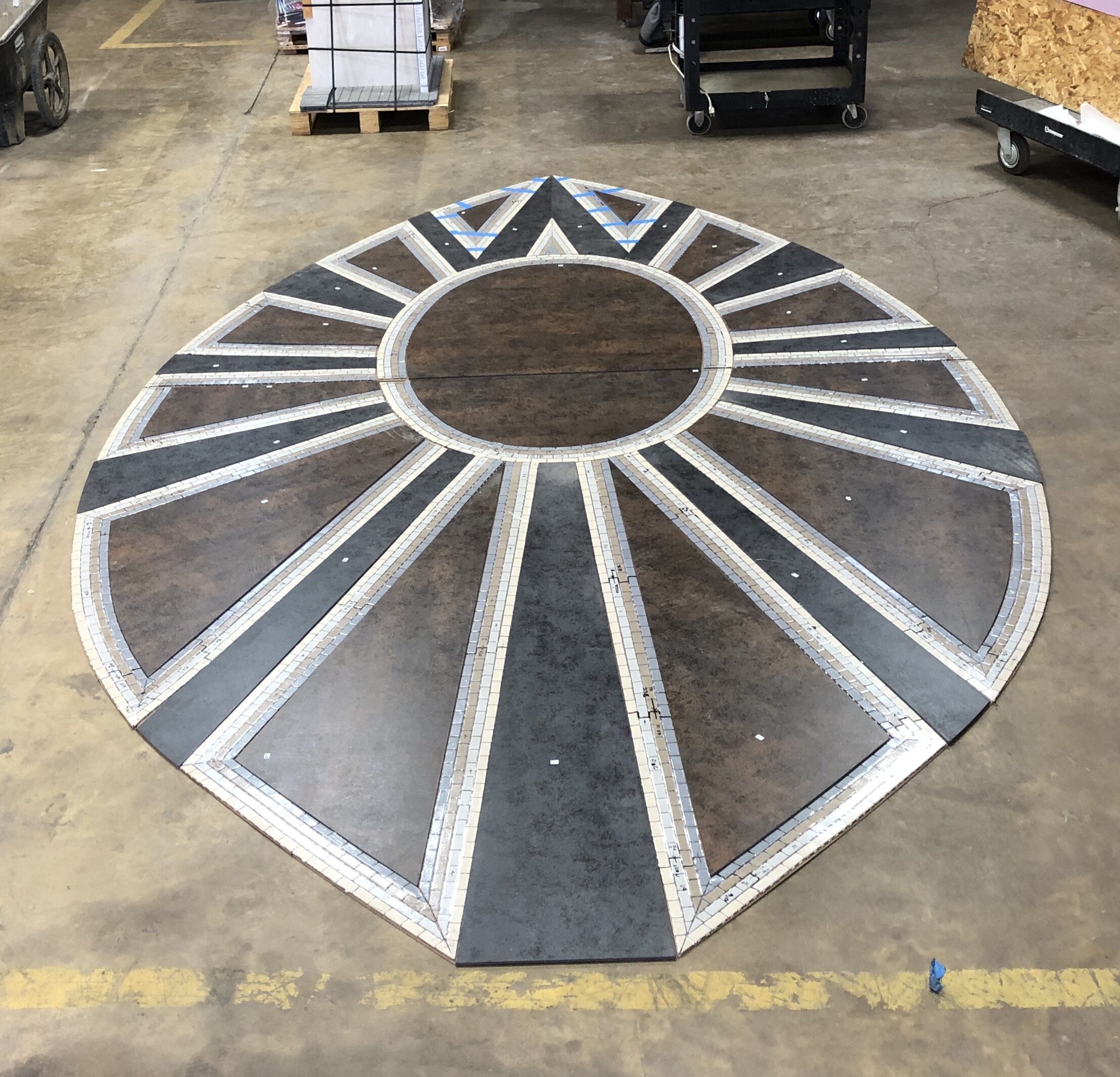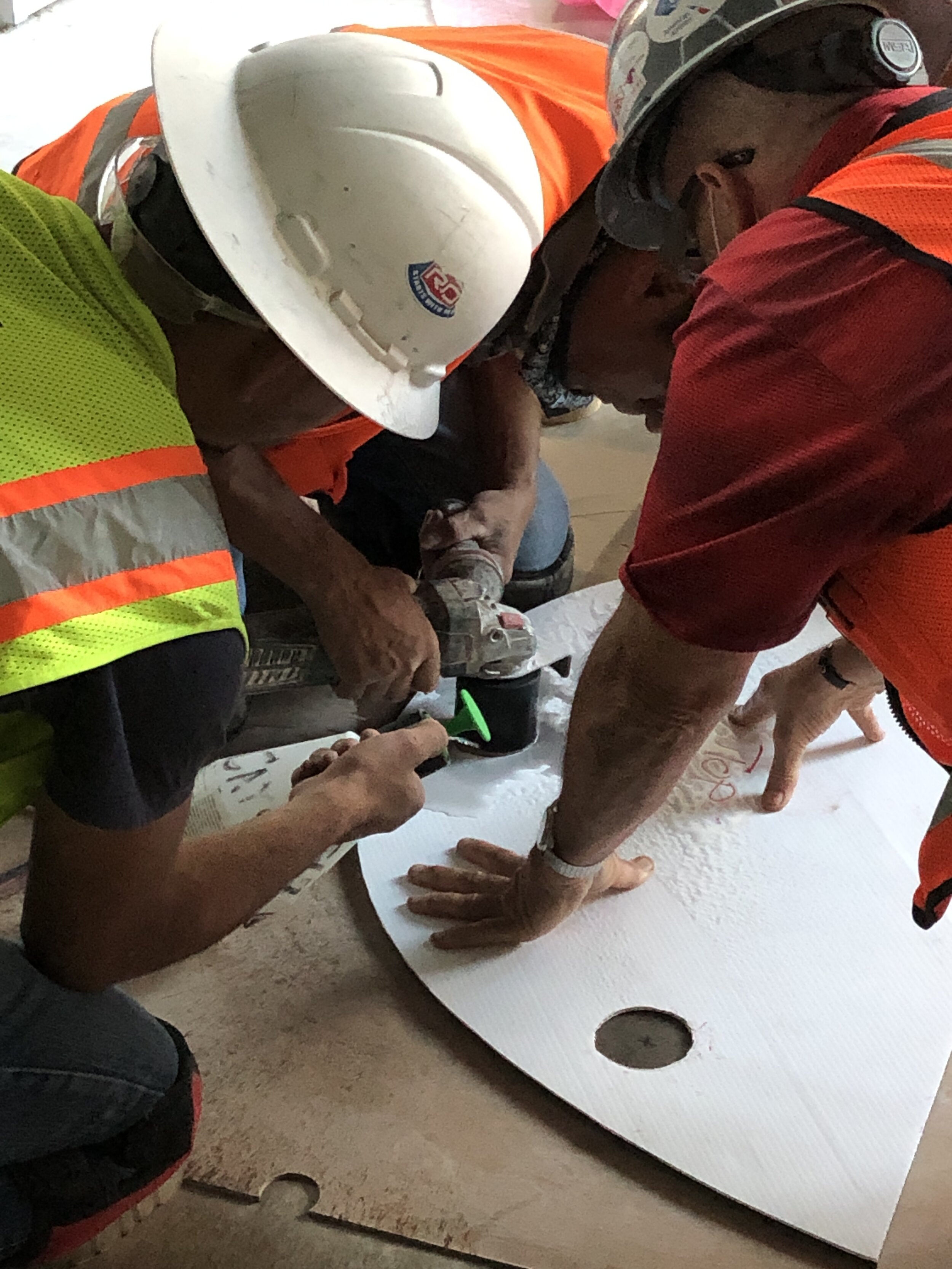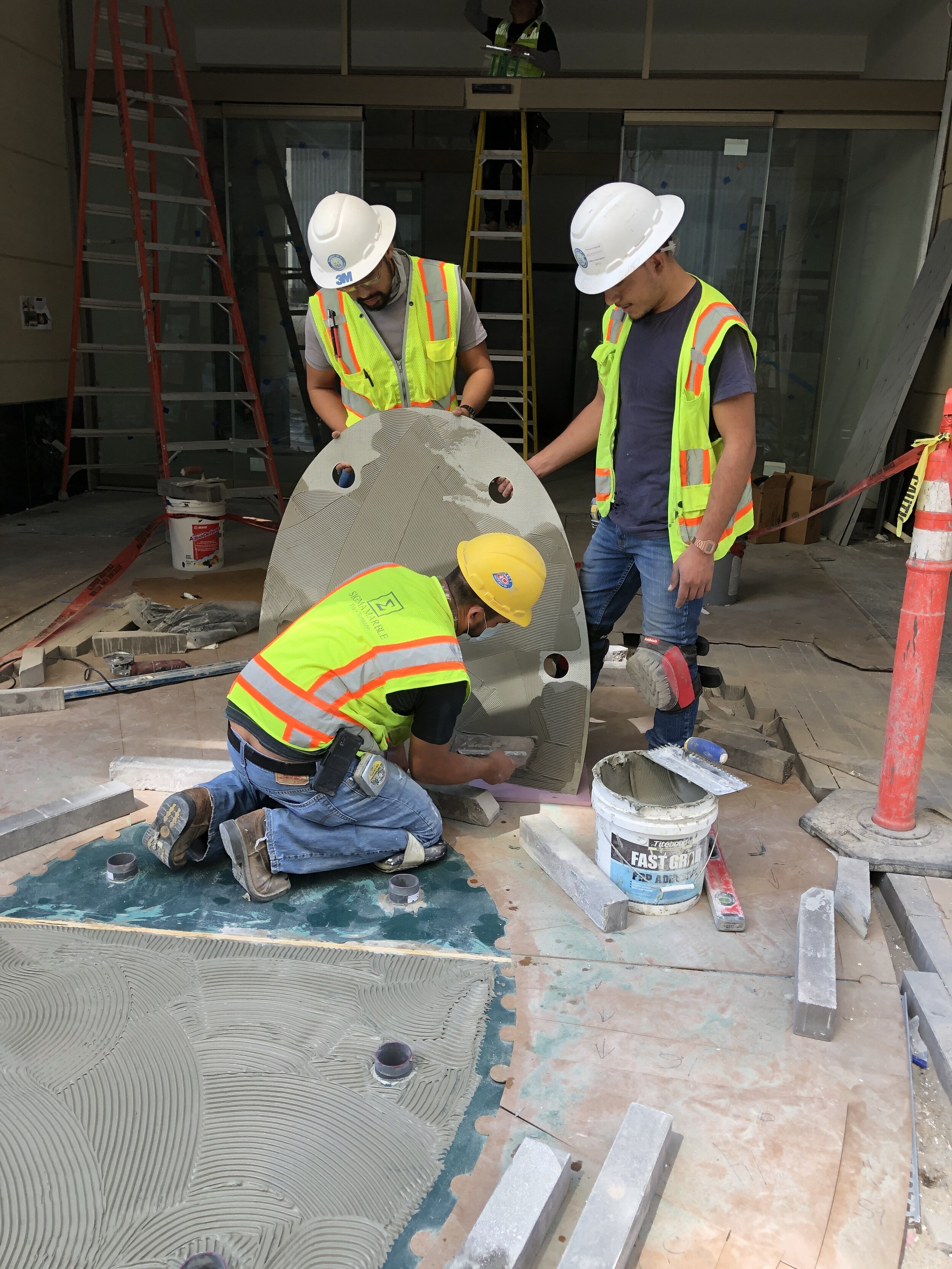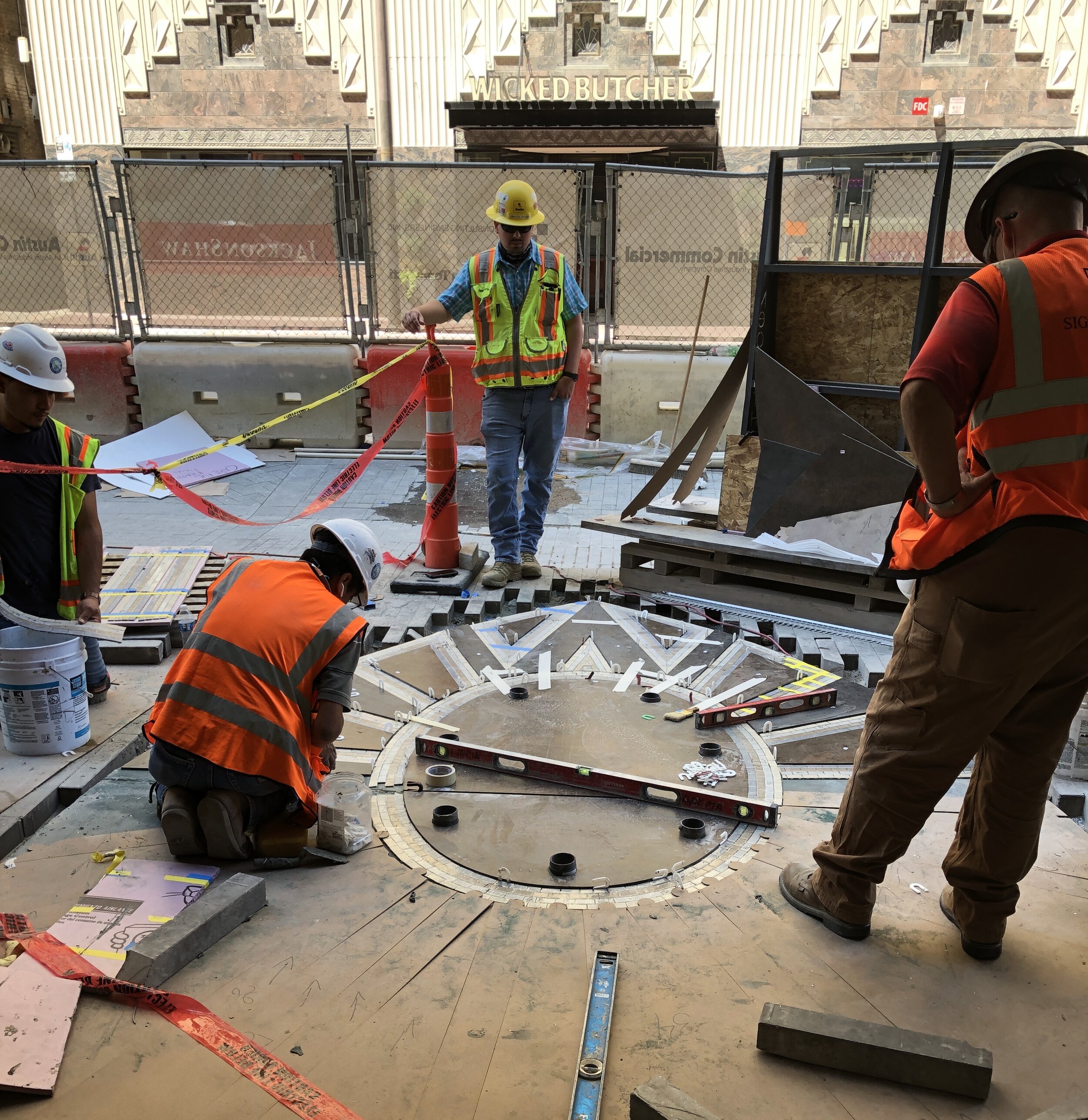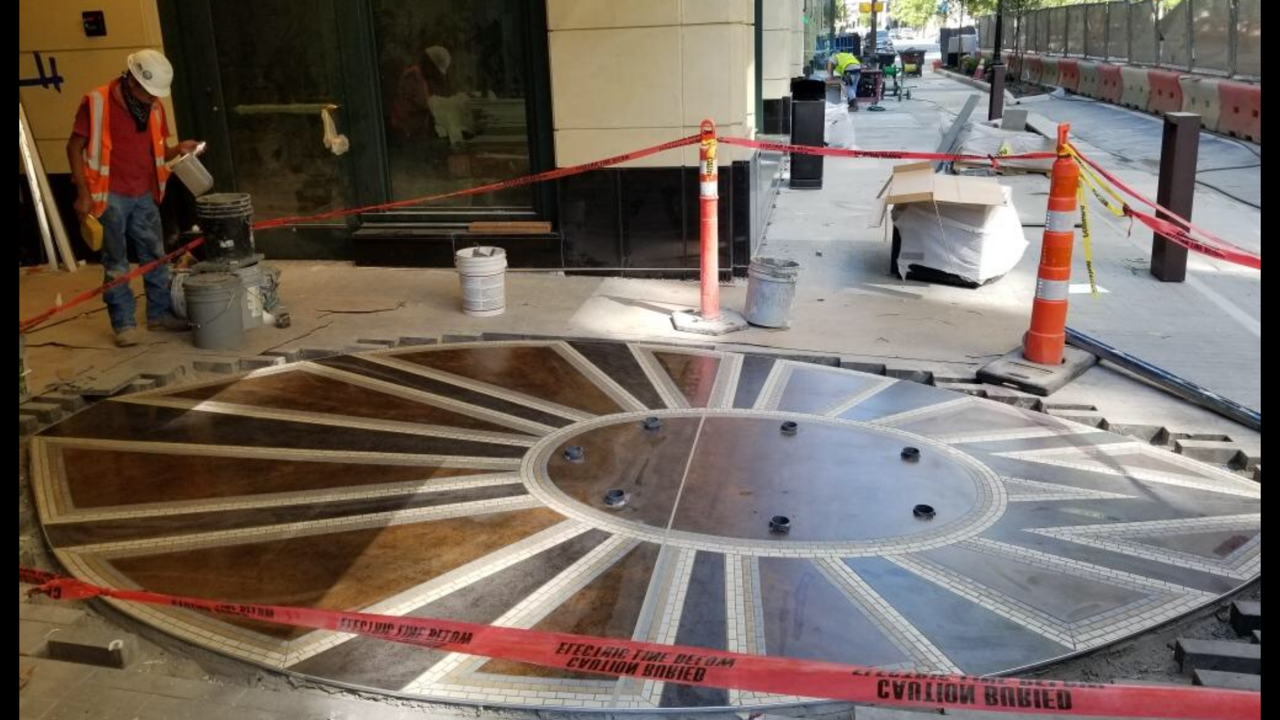I’m excited to have my recent project for Fort Worth Animal Care and Control featured in this new publication highlighting data and insights on the size and scope of the public art industry and how it drives community engagement and economic growth. The CODAworx mission is to demonstrate the power of public art to change the world. They provide a platform to showcase artists’ work, connect, and find opportunities.
An estimated $ 4.4 billion worth of art commissions were awarded in 2023
- CODAworx, The Economic Power of Public Art
Order a copy here. This full-color book features informative photos of international and US-based public art initiatives, loads of economic statistics, examples of best practices for sustainability and the environment, and more.
